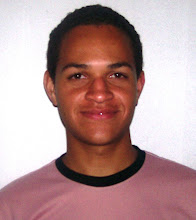
During Luciana Colluci’s workshop we watched the movie The Emperor’s club. We were asked to identify the teacher’s roles on the movie:
The teacher’s roles were well shown on the movie. Planner, this role is seen when the teacher, Mr. Hundert, planned the competition on Roman history. Everything was settled, but one of the students was cheating, even in this kind of situation the teacher was able to solve the problem, because in my opinion he was prepared to any eventuality.
Mr. Hundert proved to be a good informer, he was familiar with the subject he taught. Manager, he could organize the learning space, he made sure that everything was running smoothly. The students had a routine to follow, we noticed it in one of the first scenes when he told the students that it was time to sleep.
He was an involver when he motivated Sedgewick, a rebellious student, to learn about Roman history. He was tough when it was necessary but he was gentle when he saw that Sedgewick wanted to learn. He trusted him.
He was a diagnostician when he looked for Sedgewick’s father in order to let him know about his son’s behavior. His father didn’t care for anything wrong that his son was doing, since this moment Mr. Hundert managed to find out that the boy’s indiscipline was related to the lack of interest of his father in him.
One thing that I found relevant in Mr. Hundert’s method was that he wasn’t attached to any teaching style, he was malleable, he had the great ability to change his approach to teach his pupils properly. As far as I am concerned all the teachers must have this skill.
The teacher’s roles were well shown on the movie. Planner, this role is seen when the teacher, Mr. Hundert, planned the competition on Roman history. Everything was settled, but one of the students was cheating, even in this kind of situation the teacher was able to solve the problem, because in my opinion he was prepared to any eventuality.
Mr. Hundert proved to be a good informer, he was familiar with the subject he taught. Manager, he could organize the learning space, he made sure that everything was running smoothly. The students had a routine to follow, we noticed it in one of the first scenes when he told the students that it was time to sleep.
He was an involver when he motivated Sedgewick, a rebellious student, to learn about Roman history. He was tough when it was necessary but he was gentle when he saw that Sedgewick wanted to learn. He trusted him.
He was a diagnostician when he looked for Sedgewick’s father in order to let him know about his son’s behavior. His father didn’t care for anything wrong that his son was doing, since this moment Mr. Hundert managed to find out that the boy’s indiscipline was related to the lack of interest of his father in him.
One thing that I found relevant in Mr. Hundert’s method was that he wasn’t attached to any teaching style, he was malleable, he had the great ability to change his approach to teach his pupils properly. As far as I am concerned all the teachers must have this skill.





